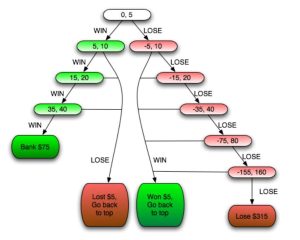
Poker is a game of strategy and skill that has captivated players for centuries. One of the most exciting and treacherous moves in this game is bluffing. Bluffing is the act of pretending to have a stronger hand than you actually do, in order to deceive your opponents and force them to fold their hands. While bluffing can be a powerful tool, it can also be a double-edged sword. Knowing when to raise the stakes and when to fold can make all the difference between a successful bluff and a disastrous one.
The Art of the Bluff
Bluffing is a delicate art that requires a deep understanding of the game, your opponents, and your own table image. It is not a strategy that should be used haphazardly or indiscriminately. Bluffing should be employed when you have a reasonable chance of convincing your opponents that you have a stronger hand than what you actually hold. This requires careful observation of your opponents’ betting patterns, body language, and overall behavior at the table.
Reading Your Opponents
One of the key aspects of successful bluffing is the ability to read your opponents. This means paying attention to their bets, their reactions to certain cards on the table, and any changes in their behavior. Players who regularly bet confidently and aggressively may be more likely to fold when faced with a significant raise, while more cautious players may be less likely to fold even if they suspect a bluff. By understanding how your opponents play and react to various situations, you can gain valuable insights into when it may be advantageous to raise the stakes.
Your Table Image
Another important factor to consider when bluffing is your own table image. Table image refers to the perception that other players have of you based on your previous actions and behavior at the table. If you have been playing conservatively and only betting with strong hands, your opponents are more likely to believe that you have a strong hand when you do decide to bluff. Conversely, if you have been consistently aggressive or have been caught bluffing multiple times, your opponents may be more skeptical of your bets and less likely to fold. Adjusting your bluffing strategy to match your table image can greatly increase your chances of success.
Assessing the Situation
Before raising the stakes with a bluff, it is crucial to assess the current situation at the table. Consider factors like the number of players remaining in the hand, the size of the pot, your position at the table, and the overall dynamics of the game. Bluffing against a large number of players is generally riskier, as it increases the likelihood that someone may have a stronger hand. On the other hand, bluffing against a single opponent, especially in a heads-up scenario, can be more effective. Additionally, the size of the pot can influence the risk-reward ratio of bluffing. A small pot may not be worth bluffing for, while a large pot can offer a substantial reward for a successful bluff.
Knowing When to Fold
While bluffing is undoubtedly an exhilarating part of poker, it is important to know when to fold. Bluffing too frequently or in the wrong situations can quickly deplete your chip stack and lead to a significant disadvantage. It is essential to recognize when your bluff has failed and to gracefully fold your hand. If your opponents are showing strong resistance, betting aggressively, or showing signs of confidence in their hand, it may be best to cut your losses and preserve your chips for a better opportunity. Maintaining discipline and restraint will help you avoid costly mistakes and keep you in the game for longer.
Conclusion
Bluffing in poker is a high-risk, high-reward strategy that can be a powerful weapon when used judiciously. By understanding your opponents, assessing the situation, and having a strong table image, you can increase the likelihood of success when raising the stakes with a bluff. However, it is equally important to recognize when the time is right to fold and move on to the next hand. Bluffing should never be seen as a guaranteed path to victory but rather as a carefully calculated move that can turn the tide in your favor. With practice and experience, you can become a master of the art of bluffing in poker.

